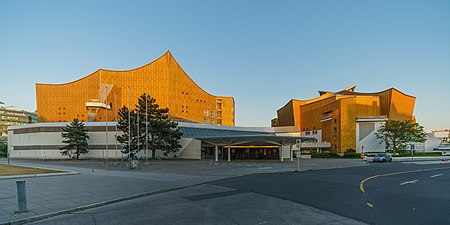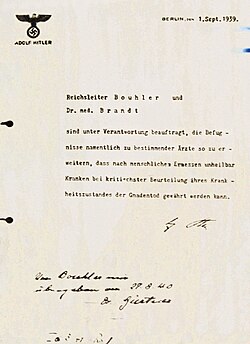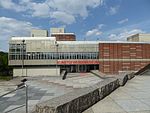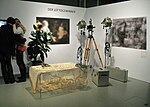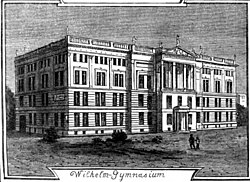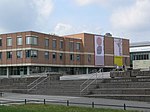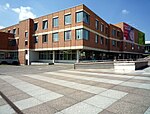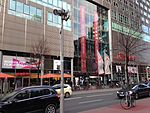Aktion T4 (German, pronounced [akˈtsi̯oːn teː fiːɐ]) was a campaign of mass murder by involuntary euthanasia which targeted people with disabilities and the mentally ill in Nazi Germany. The term was first used in post-war trials against doctors who had been involved in the killings. The name T4 is an abbreviation of Tiergartenstraße 4, a street address of the Chancellery department set up in early 1940, in the Berlin borough of Tiergarten, which recruited and paid personnel associated with Aktion T4. Certain German physicians were authorised to select patients "deemed incurably sick, after most critical medical examination" and then administer to them a "mercy death" (Gnadentod). In October 1939, Adolf Hitler signed a "euthanasia note", backdated to 1 September 1939, which authorised his physician Karl Brandt and Reichsleiter Philipp Bouhler to begin the killing.
The killings took place from September 1939 until the end of World War II in Europe in 1945. Between 275,000 and 300,000 people were killed in psychiatric hospitals in Germany, Austria, occupied Poland, and the Protectorate of Bohemia and Moravia (now the Czech Republic). The number of victims was originally recorded as 70,273 but this number has been increased by the discovery of victims listed in the archives of the former East Germany. About half of those killed were taken from church-run asylums. In June 1940, Paul Braune and Fritz von Bodelschwingh, who served as directors of sanatoriums, protested against the killings, being members of the Lutheran Confessing Church.
The Holy See announced on 2 December 1940 that the policy was contrary to divine law and that "the direct killing of an innocent person because of mental or physical defects is not allowed". Bishop Theophil Wurm of the Lutheran Confessing Church "wrote an open letter denouncing the policy." Beginning in the summer of 1941, protests were led in Germany by the bishop of Münster, Clemens von Galen, whose intervention led to "the strongest, most explicit and most widespread protest movement against any Nazi policy since the beginning of the Third Reich", according to Richard J. Evans.
Several reasons have been suggested for the killings, including eugenics, racial hygiene, and saving money. Physicians in German and Austrian asylums continued many of the practices of Aktion T4 until the defeat of Germany in 1945, in spite of its official cessation in August 1941. The informal continuation of the policy led to 93,521 "beds emptied" by the end of 1941. Technology developed under Aktion T4, particularly the use of lethal gas on large numbers of people, was taken over by the medical division of the Reich Interior Ministry, along with the personnel of Aktion T4, who participated in the mass murder of Jewish people under Operation Reinhard. The number of people killed was about 200,000 in Germany and Austria, with about 100,000 victims in other European countries. Following the war, a number of the perpetrators were tried and convicted for murder and crimes against humanity.
